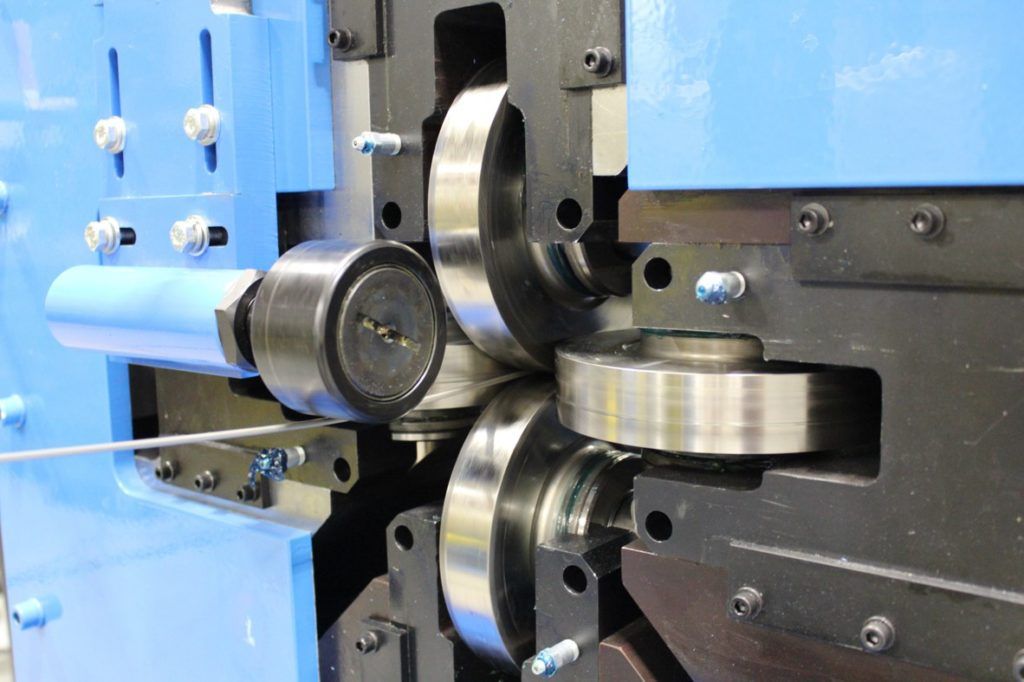Swaging is a metal forming process that deforms and shapes roundish objects into lugs, ferrules, and other forms. It can also be used to crimp and reduce metal wires, rods, and tubes.
Rotary swaging machine use two or four split dies that separate and close up to 2,000 times per minute. When hammer blocks strike each of these rollers, centrifugal force drives the die halves inward to compress and seal the metal workpiece being swaged.
Cost-effective
Many applications use swaging to attach fittings to pipes and cables (also called wire ropes). The pieces loosely fit together, then a hydraulic or mechanical tool compresses and deforms them into a permanent joint. Some examples include reducing nipples on tubing used in commercial furniture, and flared pieces of pipe on the ends of legs. Swaging can also be done to increase the strength of joints where they come in contact with the ground or casters.
The softer the material, the easier it is to swage. Higher amounts of carbon, chrome, molybdenum, and nickel, however, decrease ductility and make it harder to swage. In these cases, hot swaging is required to achieve the desired results.
PROMEC swaging machines can swage a wide range of Mil-Spec ball, oval, and straight shank fittings, as well as stake eyes, hex nuts, and button stops in a single cycle. They can even swage internally shaped tubes with an outer diameter different from the inside.
Accuracy
Swaging is a metal-forming process that involves hammering a workpiece to take its shape. This results in a high surface finish that eliminates the need for a secondary operation. It also allows for a higher degree of accuracy than machining.
The swaging process is fast and precise, and it produces a strong and durable connection between hoses and fittings. It also increases the ductility of the material. This is because the reduction is done by many forceful blows that do not critically disrupt the material’s molecular arrangement.
The swaging process can be used to form many different types of rods and tubes, including rotary hoses. It can also be used to create a variety of connectors, including couplings. It’s important to choose a swaging machine that has the right size dies for the hose you want to swage. A good swager will have a gauge that will let you know when the sleeve is fully compressed.
Durability
Swaging is a metalworking process that involves forming a hole in the workpiece using repeated radial blows with two or more dies. The process can also change the shape of a piece by creating a taper or adding a point. It can also be used to affix a fitting to a cable, pipe, or rod. It can be performed with or without a mandrel. The results of swaging depend on the number of dies, the material response, and the condition of the contact area.
There are three fundamental forms of swaging: end forming, reduction and through swaging. End forming is used to produce components like recreational ropes course cables and sailing rigging equipment. In this method, a fitting is first placed over the cable and then swaged to form an assembled component. This process allows greater control of wall thickness. Other special applications include swaging for military uses, automotive parts, rubber components and aerospace applications. In addition, swaging can be used to form metal tubes and rods for many industries.
Variety
Swaging machines can be used for a wide range of applications. They come in many different sizes, ranging from small, hand-operated machines, often for service level requirements, to large, powered models — some fully automated — for high-volume swaging production.
Most are designed to be cold working, although in some applications, swaging can be done hot as well. Swaging is a low-cost way to efficiently point, reduce and form rod, tube or wire. It is a special type of forging in which metal is formed by a rapid succession of hammer blows.
FENN swaging machines are available in two basic varieties: tube swagers and rotary swaging. The former reduces the diameter of a tube by hammering it against a mandrel, while the latter swages internal shapes into hollow items. For example, the swaging process can be used to flare or bell the ends of copper or steel tubes. The result is a strong, durable joint that provides grip for hose material and improves flow area through the tubing or hose.



